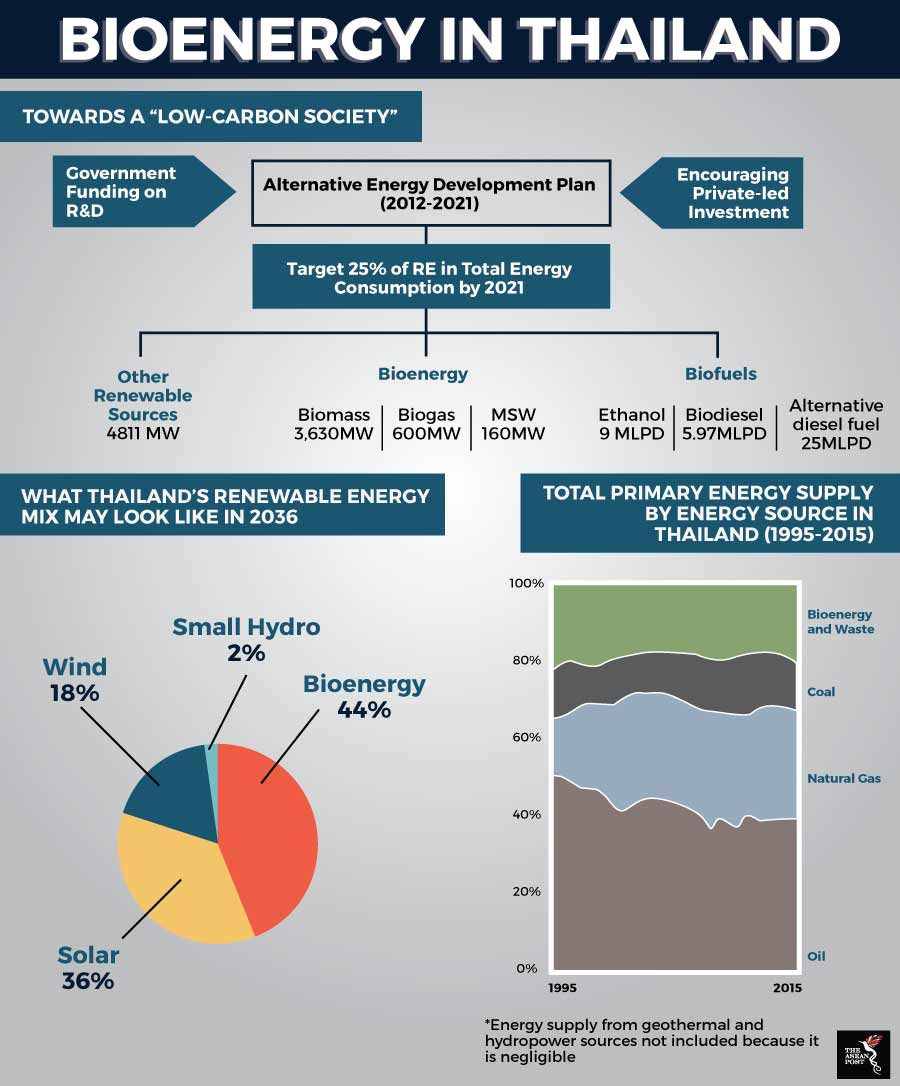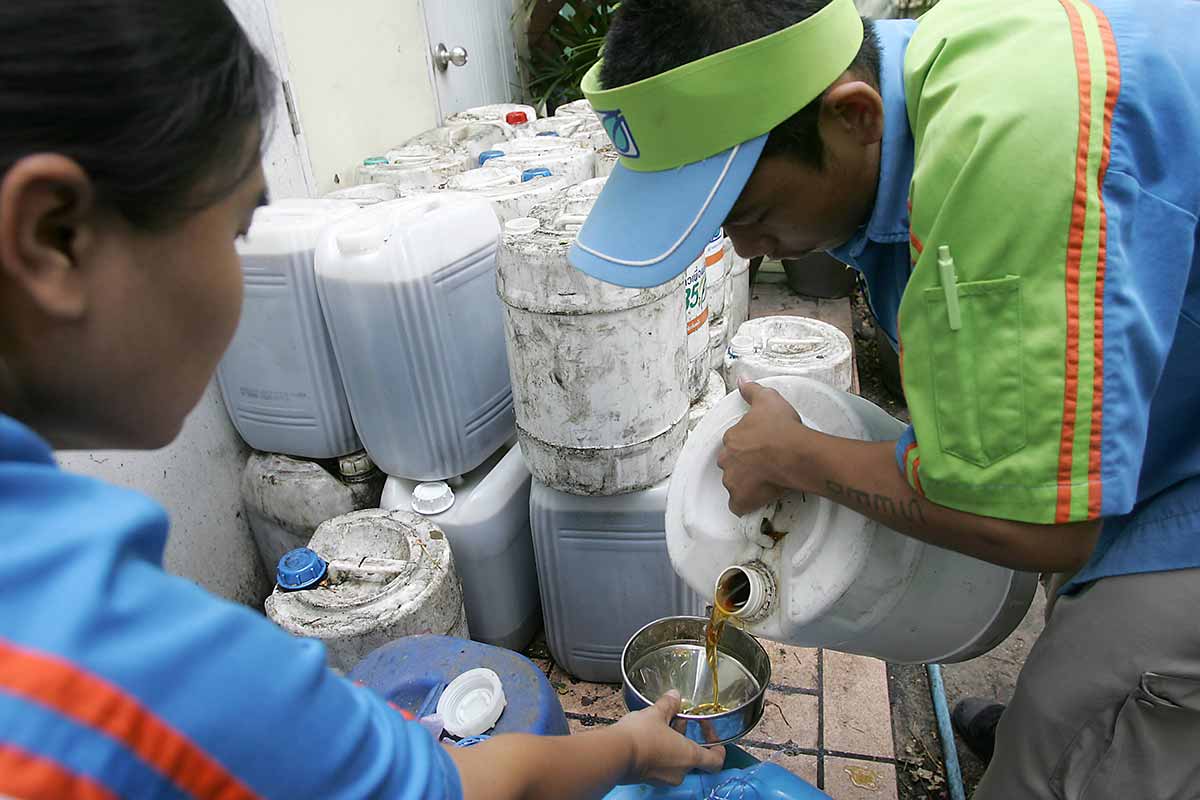Members states of the Association of Southeast Asian Nations (ASEAN) are turning to renewable energy as the most sustainable way to ensure energy security. The shift to renewables can be expensive and arduous. However, thanks to the geography of this region, Southeast Asian nations are not short of options when it comes to generating energy using a myriad of methods ranging from solar and hydro to wind and bioenergy.
In recent times, modern bioenergy has been at the forefront of renewable energy development in the ASEAN region. Modern bioenergy differs from traditional bioenergy. Unlike the latter – which is derived from sources like charcoal and fuelwood that is used by rural communities and contribute to air pollution – modern bioenergy relies on the concept of deriving energy from biological waste products. For example, agricultural waste, recycled greases and animal waste.
While Indonesia and Malaysia are two countries that dominate this sector due to advancements in the palm oil industry, Thailand is fast catching up.
Alternative Energy Development Plan
For a long time, Thailand has been dependent on imported energy to sustain its domestic demand. Between 2000 and 2011, imported energy accounted for more than 60 percent of the total commercial primary energy in the country. To break away from this reliance on foreign sources of energy, the government there has adopted a string of policies. One of which is the Alternative Energy Development Plan (AEDP) which aims to increase the share of locally produced energy while ensuring that it is derived from renewable sources.
Under the AEDP, bioenergy plays a crucial role in terms of electricity generation and meeting the demand for energy in the transportation sector. Electricity in megawatts (MW) generated from biomass, biogas and municipal solid waste is expected to increase twofold (3,630 MW), fourfold (600 MW) and twelvefold (160 MW), respectively.
The Eastern Economic Corridor (EEC) which straddles three Thai eastern provinces is set to emerge as a potential hub for bioenergy. The EEC is one of many initiatives by the Thai government to attract investments and position the country as a leading commercial hub in the region.
Currently, bioenergy in terms of biogas, biomass and those derived from other waste products represent a significant slice of Thailand’s renewable energy mix. Among all ASEAN states, Thailand has the largest share of bioenergy for industrial and transportation use. In Thailand, the main sources of bioenergy are agricultural and municipal waste due to the fact that its economy is heavily reliant on the agricultural sector. Each year, there is an estimated 80 million tons of agricultural waste from crops like sugarcane, corn, cassava, rubber and rice.
Bioenergy in Thailand is mainly consumed by small and large-scale industries. In 2015, biomass accounted for 5,990 kilotonne of oil equivalent (ktoe) of heat for industry – an uptick of 15.5 percent compared to the previous year – translating to close to 60 percent of the renewable energy used in the country.

Source: Various sources.
Sugar mills in Thailand utilise bagasse – the residue pulp of sugar cane after its juice is extracted – to produce thermal energy for the distillation process. In some mills, the steam from bagasse combustion is used to drive steam turbines for power generation. Waste from Thai oil palm mills is also commonly used to produce thermal energy for the sterilisation of fresh fruit. Besides that, it is also further processed for electricity generation. Wood waste and black liquor from pulp and paper mills are also converted for use as fuel in the production of thermal energy and electricity.
In terms of the transportation sector, Thailand has the largest share of liquid biofuels use in the ASEAN region with the renewable energy share reaching 11 percent for gasoline and six percent for biodiesel. In 2015, production of biodiesel accounted for 36 percent of the final demand for palm oil – 41 percent was consumed domestically whereas 12 percent was exported.
The biofuel industry in Thailand is set to grow. Biofuels are slated to substitute 44 percent of oil consumption in 2021. In 2015, the country produced 66.9 million litres of biofuel per day. The Thai government is looking to quadruple this to 253 million litres of biodiesel and bio-ethanol per day by 2036. This translates to renewables accounting for 25 percent of fuel demand in the future.
Thailand’s potential in bioenergy generation cannot be underestimated. It has the necessary resources and good policy framework in place to fully capitalise on this opportunity. It stands as a role model for other countries in the region looking to turn to bioenergy as an alternative source of energy.
This article was first published by The ASEAN Post on 27 March 2018 and has been updated to reflect the latest data.
Related articles:
Biofuel, an alternative energy source in Southeast Asia
Renewable energy development to create jobs in Southeast Asia
